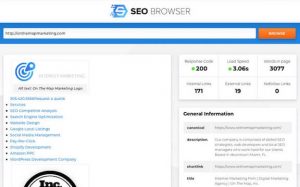eCommerce competition seems to be largely driven on one point now – at least the platforms seem to think so. Delivery times have been dropping rapidly over the past year as each major retailer and eCommerce platform attempts to provide better convenience to the end customer.
Each of Amazon, Target and Walmart have made drastic changes to their product delivery in 2019 – even though it is estimated to costs huge sums of money to meet the demand. Whether these changes will be sustainable for the long term or has significant financial consequences for these companies remains to be seen.
The only clear winner seems to be the shopper with added convenience. But as all these businesses create shorter and shorter delivery times will they actually increase consumer loyalty if everyone offers the same delivery times?
Amazon Delivery Times
The premium shipping options available on Amazon are numerous – but the biggest change that Amazon made this year was announcing that they would be shifting Prime 2-Day shipping to 1-Day shipping. They began rolling out 1-Day shipping on some products back in May and have since made it available on more than 10 million products on Amazon.
One-day delivery from Amazon is as much a response to what other retailers had already started to do before them, as we will see below. But along with decreased delivery times, Amazon also made some changes to their delivery costs this year.
Amazon dropped the $ 14.95 a month fee for their AmazonFresh program to help it compete with other retailers like Walmart that made their own changes to their grocery delivery. The additional $ 180 a year on top of the already $ 119 Amazon Prime Membership made it an expensive grocery shopping option for consumers. It will be interesting to see whether the dropped fee leads to a significant increase in sales volume from the AmazonFresh program.
Target Delivery Times
The most significant change in delivery times was arguably made by Target earlier this year. Target announced that same-day delivery would be available in certain markets for online grocery orders – and has since expanded that to cover 47 states.
Target’s retail footprint has allowed them to provide a variety of convenience increasing offers to their shoppers along with the same-day delivery. The retailer’s locations are primarily in large residential markets which has also allowed them to expand their same-day pick up services thereby providing two same-day experiences that consumers can take advantage of.
Shipt was acquired by Target to make their same-day delivery possible. Customers that create a Shipt membership for $ 99 a year can receive unlimited free same-day delivery – meaning customers could get fresh groceries every single day if they wanted to at a cost less than a Prime Membership. All other shipments over $ 35 have a flat delivery fee of $ 9.99.
Walmart Delivery Times
Physical retail locations provide Walmart a delivery time advantage similar to Target. Walmart’s professional grocery picking teams had already been providing in-store pick up services prior to Walmart’s announcement in May that free Next Day Delivery would be available on all items without any membership fee.
Walmart then slashed delivery times even further in September by announcing that same-day deliver will be available in over 200 metropolitan areas by the end of 2019. Retailers with a physical footprint like Walmart and Target are transforming their stores into fulfillment centers.
While they do not have the robotic and logistical advantages that Amazon has invested in so heavily, they do have the proximity to customers and better capability to complete last-mile delivery. The integration of sales and fulfillment in-store and on the Walmart Marketplace is helping customers get a wider selection of goods in a shorter time.
And there are some early signs that it may be working. A survey compiled by First Insight shows that the percentage of customers who preferred to shop at Walmart instead of Amazon actually increased in 2018. It will be interesting to see how the introduction of Walmart’s new delivery programs will affect shopper sentiment this year.
Dealing with The Massive Costs
The end customer clear wins at delivery times keep getting cut by all major retailers. And the retailers are left to deal with the huge costs of providing these delivery services. Amazon has increased spending on shipping and fulfillment 50% in the 3rd quarter compared to the prior year.
Now at $ 9.6 billion in spend, it seems like the number is going to get a lot higher. Amazon is expected to spend an additional $ 1.5 billion in Q4 on one-day shipping alone. The huge investment in their logistics and fulfillment is their latest move in trying to dominate online shipping, and they firmly believe that it will pay dividends down the road.
The physical footprints of both Walmart and Target means that getting the final product to your door may actually cost the retailer less. But while this may be an advantage over Amazon, they have significantly higher human capital costs compared to Amazon’s huge investments in robotics.
Same-day delivery costs go well beyond just the financial aspects. The environmental damage that shorter delivery times causes could be the most significant cost. Speedy delivery increases the logistical challenges significantly. It has the potential to increase inefficiency – meaning that more delivery trucks are on the road emitting more greenhouse gases. Amazon has announced their commitment to be carbon neutral, but significant investments will need to be made to make that a reality.
As the battle for shorter delivery times heats up, consumers stand to win. The real factors that might actually determine how the fight for faster shipping plays out may just be external. Financial markets and government regulators still have a significant role to play and how they react to shorter delivery times will probably determine which major retailer will win in the end.
Digital & Social Articles on Business 2 Community
(19)




